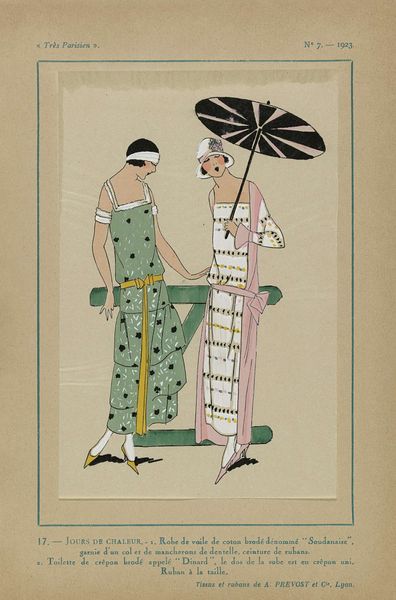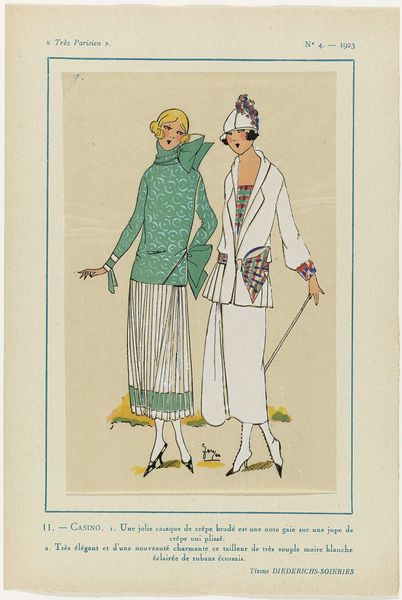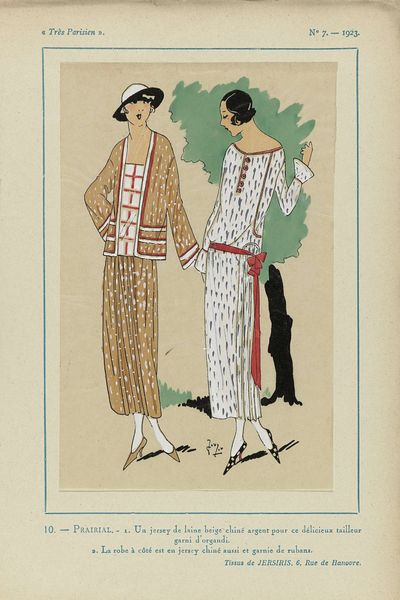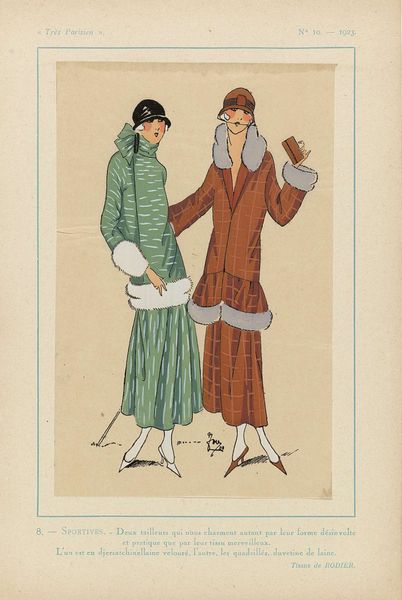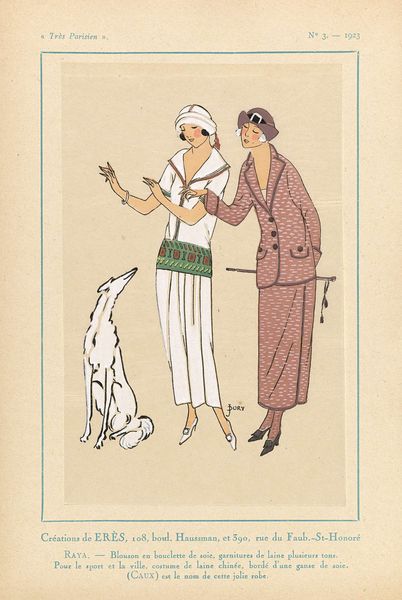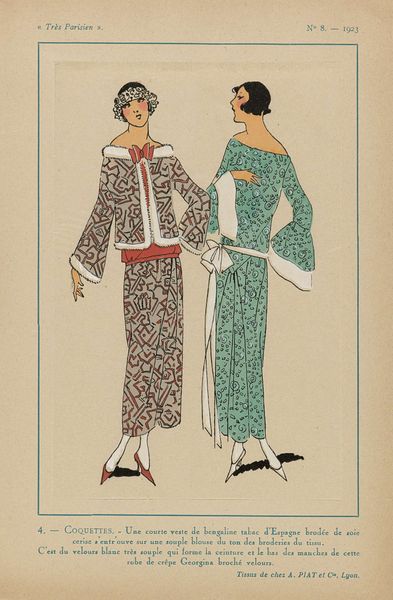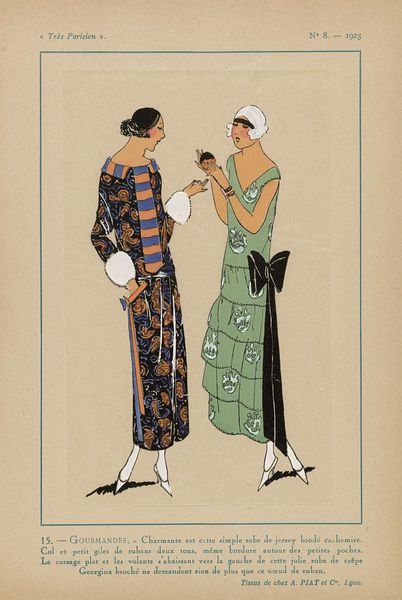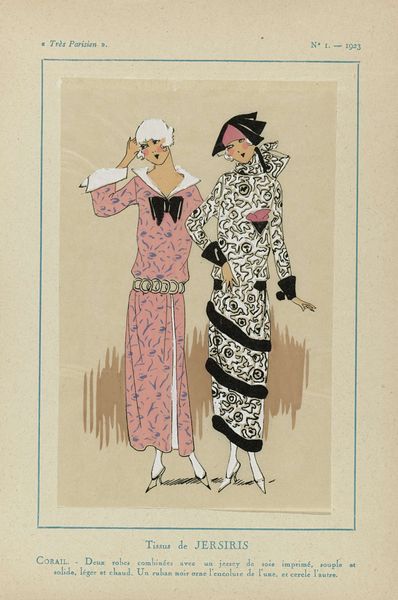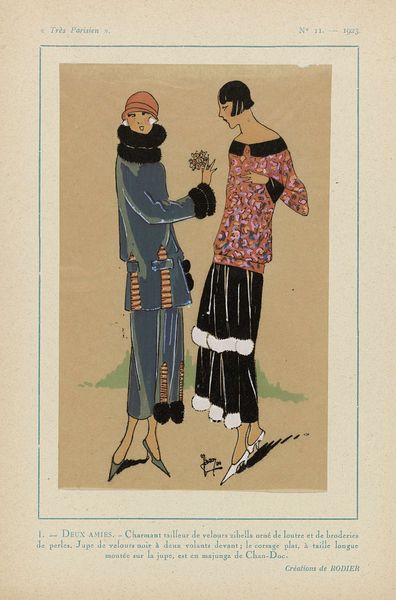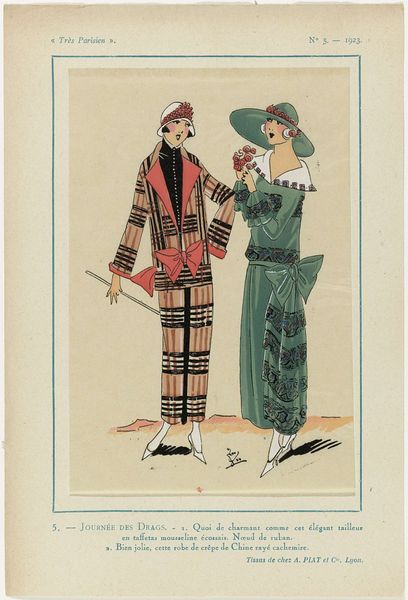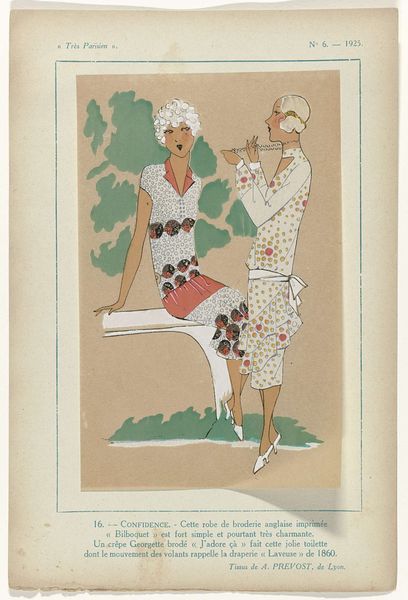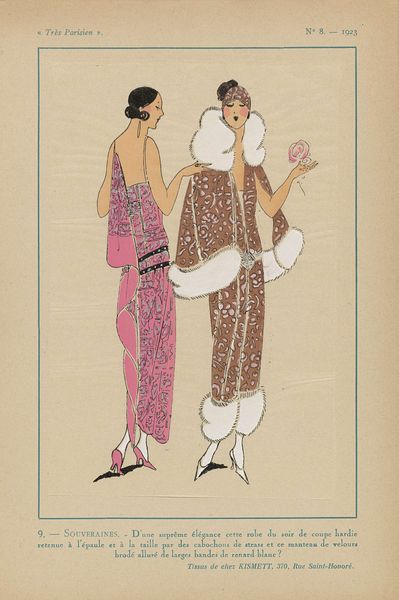
drawing, paper, ink
#
portrait
#
art-deco
#
drawing
#
paper
#
historical fashion
#
ink
#
watercolour illustration
Dimensions: height 269 mm, width 180 mm
Copyright: Rijks Museum: Open Domain
Editor: This is "Très Parisien. La Mode, Le Chic, L’Élégance," a drawing in ink and watercolor on paper, dating back to 1923. It's an illustration of two women in stylish, matching green outfits and feels like a snapshot of Parisian high society. How do you interpret this work in its historical context? Curator: This piece encapsulates the early 1920s fascination with modernity and the construction of the ‘new woman.’ Think about what was happening socially and culturally. The end of World War I brought significant societal shifts, particularly regarding women's roles. Consider also the Art Deco aesthetic: the sleek lines, the stylized figures – how do these elements speak to the changing societal landscape and the burgeoning consumer culture that were redefining the public image of women at the time? Editor: So, the fashion illustration itself becomes a political statement by showcasing the changing ideals? Curator: Precisely. It moves beyond simply displaying garments, and it contributes to the popular visual culture. Images like these circulated widely, shaping and reinforcing perceptions of Parisian elegance and aspiration, impacting fashion trends beyond France. Editor: It's amazing how much historical context can be embedded in what initially seems like a simple fashion plate. What about the anonymity of the artist? Curator: The focus was more on the magazine's branding than on individual authorship. Consider this image as part of a larger publishing apparatus, a system producing and disseminating idealized images of women for a consumerist audience. Editor: It shifts my perspective to view the illustration less as an isolated piece and more as part of a larger cultural machine at work. Thanks, I hadn’t thought of that. Curator: Indeed. This drawing allows us to reflect on the art market system that dictates trends even to this day.
Comments
rijksmuseum about 2 years ago
⋮
Très Parisien promoted itself as chic and elegant. Between 1920 and 1936 it presented creations by such couturiers as Chéruit, Premet, Philip et Gaston, and Lanvin. The young, svelte models are all ultra-modern, shown talking on the phone, smoking and playing tennis. The illustrations also show that over the course of the 1920s, skirt lengths had risen to just below the knee, before dropping back down to calf length in the 1930s. The small plates were printed on transparent paper using a stencilling technique known as en pochoir and then hand coloured; many of them are unsigned. The signature ‘Joujou’ belonged to Germaine Paule Joumard, who was the director of Très Parisien, as well as one of the magazine’s illustrators.
Join the conversation
Join millions of artists and users on Artera today and experience the ultimate creative platform.
